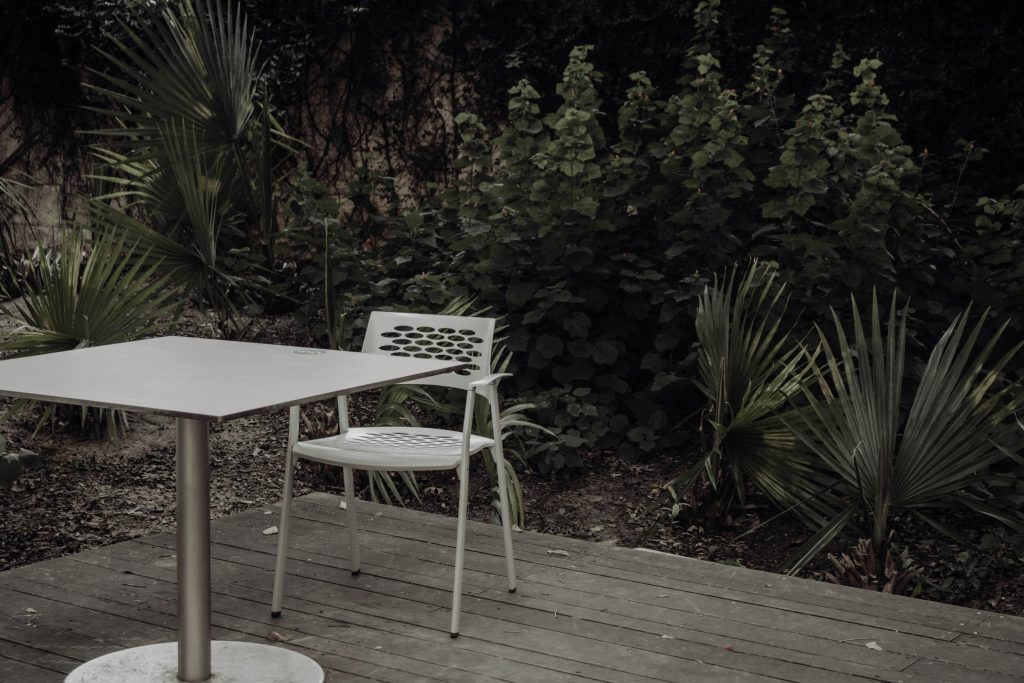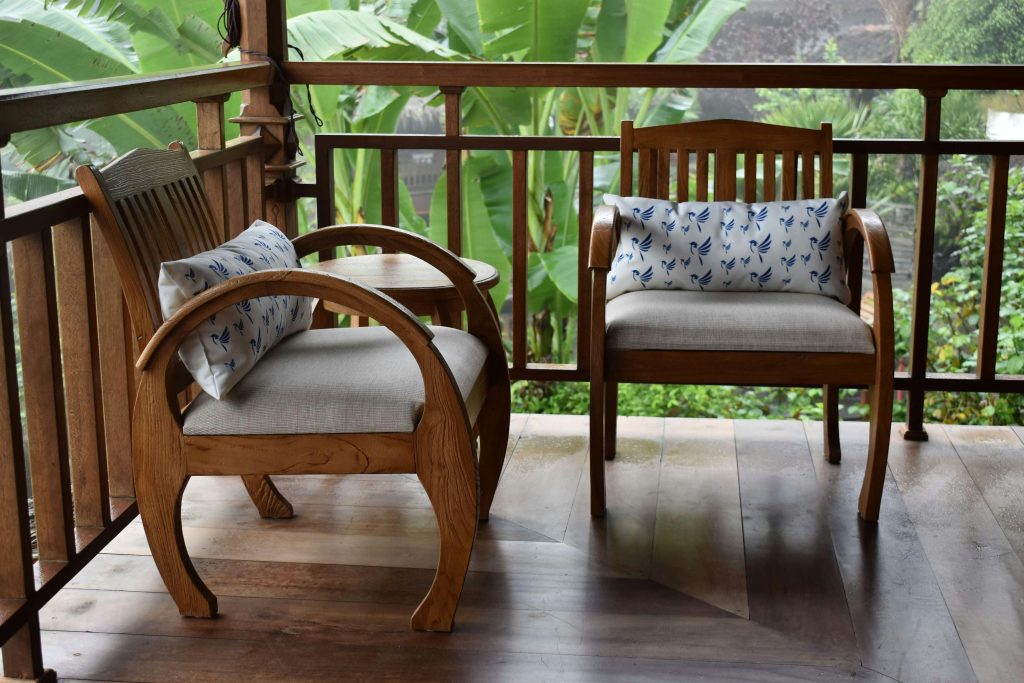Imagine standing on your backyard deck, the sun setting gently as you sip a refreshing drink, feeling the smooth, sturdy wood beneath your feet. That perfect moment, blending comfort with nature’s beauty, doesn’t happen by chance. Behind every exceptional outdoor space lies the mastery of top deck building techniques, those clever strategies that ensure your deck isn’t just a flat platform, but a durable, stylish, and valuable extension of your home.
If you’ve ever wondered how some decks withstand the harshest weather, maintain their charm year after year, and even boost property value, you’re about to uncover the secrets. In this article, we’ll dive deep into the top deck building techniques focused on durability, style, and value, three pillars that every homeowner should consider before taking on a deck project. Whether you’re planning to build from scratch or upgrade an existing deck, understanding these principles will empower you to create a space that lasts, impresses, and pays off.
You’ll learn which materials hold up best against the elements without sacrificing aesthetic appeal, how innovative design choices can elevate your deck’s style, and smart building practices that enhance longevity while adding to your home’s market worth. From selecting the right fasteners to embracing sustainable options, this comprehensive guide will equip you with practical insights and expert advice to transform your outdoor living experience.
Ready to turn your deck dreams into reality with proven top deck building techniques? Let’s embark on the journey towards a durable, stylish, and valuable deck that you and your family will cherish for years to come.
Table of Contents
ToggleKey Takeaways
- Durability first: Pick pressure-treated lumber, composites, or tropical hardwoods; use stainless/galvanized fasteners and pour footings below frost line.
- Structural integrity: Proper joist spacing, solid framing, and a correctly attached ledger keep the deck safe and long-lasting.
- Plan for climate: Choose materials and finishes that handle your region’s moisture, UV, heat, or freeze-thaw cycles.
- Style matters: Coordinate colors, board patterns, and railing designs to match your home’s architecture; hidden fasteners create clean lines.
- Value/ROI: Well-built decks boost curb appeal and can deliver strong resale value (often ~75%) when done right.
- Surface prep & install: Grade for drainage, pre-drill to prevent splits, and maintain precise cuts and spacing for a pro finish.
- Weatherproofing: Use UV-blocking stains/sealers on wood; follow maker care guides for composites to resist fading and mold.
- Add useful features: Built-in seating, LED lighting, planters, and pergolas raise usability and perceived value.
- Safety & codes: Follow local building codes for railings, stairs, and loads; inspect hardware regularly.
- Maintenance routine: Seasonal cleaning, tighten fasteners, and re-seal/re-stain as needed to extend life.
- Sustainability options: Consider FSC-certified wood or recycled composites to reduce environmental impact.
- Seven-step approach: Plan, design structure, choose style, prep site, install carefully, protect surfaces, then maintain—for a deck that lasts and looks great.
Why Top Deck Building Techniques Are More Important Than You Think: Durability, Style, and Value Explained
When it comes to enhancing your outdoor living space, understanding top deck building techniques durability style and value is crucial for creating a deck that not only looks stunning but also stands the test of time. A well-built deck can transform your backyard into a versatile retreat, increase your home’s market value, and offer countless hours of enjoyment. But what exactly does it take to master the art of deck building, especially when we focus on the balance between durability, style, and value? Let’s dive into why these elements should be at the forefront of every deck project.
Durability stands as the backbone of any deck construction. Choosing the right materials and employing effective building techniques ensure your deck withstands seasonal weather changes, heavy foot traffic, and the inevitable wear and tear over time. According to a 2023 report by the American Wood Council, decks that utilize advanced construction practices and high-quality materials can last up to 30 years with minimal maintenance. This longevity means fewer repairs and replacements, saving you both time and money in the long run.
Beyond durability, style infuses personality and enhances the aesthetic appeal of your outdoor space. Today’s deck designs range from classic wooden planks to sleek composite materials that mimic natural wood with added color options and textures. Combining style with smart building methods, such as proper joist spacing, hidden fasteners, and clean lines, results in a cohesive look that complements your home’s architecture and outdoor environment perfectly.
Another compelling reason to prioritize these techniques is value. A professionally constructed deck raises your property’s resale value by an estimated 75%, according to the National Association of Realtors. This investment not only boosts curb appeal but also ensures you get a solid return if you decide to sell your home. Value is also reflected through cost-efficiency: efficient building methods reduce labor and material waste, optimizing your budget without compromising quality.
Consider the story of Sarah and Mike, homeowners from Seattle, who wanted to revamp their deck to create a safe, stylish family space. By focusing on top deck building techniques durability style and value, they chose composite decking with reinforced framing and an elegant, minimalist railing design. Their new deck not only became the go-to spot for weekend barbecues but also added 10% to their home’s market appraisal. Today, their deck exemplifies the perfect fusion of durability, style, and smart investment.
In conclusion, mastering top deck building techniques durability style and value is essential for anyone looking to create an outdoor space that will endure, impress, and pay off in the long term. Whether you’re a DIY enthusiast or hiring a professional, keeping these factors front and center will ensure your deck is a source of pride and pleasure for years to come.
How to Use Top Deck Building Techniques Effectively in 7 Steps
Building a top-quality deck requires a blend of durability, style, and value , three pillars that ensure your outdoor space not only looks stunning but lasts for years. Whether you’re a seasoned DIYer or hiring a professional, applying top deck building techniques effectively guarantees that your investment stands the test of time and elevates your home’s appeal. In this step-by-step guide, we’ll walk you through the essential stages to master these techniques and create a deck you’ll be proud of.
Step 1: Plan Your Deck with Durability in Mind
Start with a detailed plan focused on durability. Choose materials that resist weathering, rot, and pests. Pressure-treated lumber, composite decking, and tropical hardwoods are excellent options. Consider your location’s climate , if you live in a wet or humid area, materials with water-resistant properties become even more crucial.
– Tip: Use galvanized or stainless steel fasteners to prevent rust.
– Example: A homeowner in the Pacific Northwest opted for composite decking and stainless steel screws, reducing maintenance and extending the deck’s life.
Step 2: Prioritize Structural Integrity in Design
Use a solid foundation coupled with strong framing techniques. Concrete footings should be poured below the frost line to prevent shifting. Adopt joist spacing and beam sizes according to load calculations. This enhances not only durability but safety.
– Visualizing the Frame: Imagine the deck as a building’s skeleton; if the bones are strong and well aligned, the whole structure will hold up well.
– Quick Check: Consult local building codes to ensure compliance with structural requirements.
Step 3: Select Styles That Complement Your Home and Lifestyle
Style bridges your deck’s look with your personal taste. Classic wooden decks with intricate railing detail offer timeless charm, while sleek composite decking appeals to modern minimalism. Think about how you’ll use the deck , for entertaining, quiet relaxation, or gardening , and pick design elements accordingly.
– Style Tip: Mix materials like wood with metal railings for a balanced appeal.
– Example: A homeowner created an elegant, yet low-maintenance deck by pairing cedar wood with black metal balusters, enhancing both durability and aesthetic value.
Step 4: Invest Time in Surface Preparation and Installation
Prepare the ground and framing thoroughly. Ensure the terrain slopes away from the house for drainage, which protects framing from water damage. During installation, maintain precision cutting and secure fastening. Avoid shortcuts; they compromise the entire deck’s life span.
– Pro Tip: Pre-drill holes in wood decking to prevent splitting.
– Common Mistake: Nailing instead of screwing deck boards, which increases the risk of loosened boards over time.
Step 5: Incorporate Weatherproofing and Protective Measures
Apply quality sealers, stains, or paints designed for exterior use on wood decks. These coatings shield the wood from UV rays and moisture, slowing deterioration. For composite decks, regular cleaning is enough but check manufacturer recommendations.
– Illustration: Seal your deck every 2-3 years to preserve color and durability.
– Materials Insight: Some stains contain mildewcides to prevent mold growth in humid conditions.
Step 6: Add Functional Features That Increase Value
Introducing functional features like built-in seating, pergolas, or lighting systems not only boosts your deck’s usability but also its market value. Opt for durable materials in these additions to maintain your deck’s longevity.
– Value Boost: Installing LED deck lights adds ambiance and safety with minimal energy use.
– User-Friendly: Built-in benches made of composite material minimize upkeep needs.
Step 7: Commit to Routine Maintenance and Inspections
Even the best-built decks need regular care to stay in prime condition. Conduct seasonal inspections looking for signs of rot, loose fasteners, or warped boards. Clean debris and treat the surface annually to protect against wear.
– Maintenance Checklist:
– Clear leaves and dirt from gaps between boards
– Check and tighten loose screws
– Reapply sealant or stain as needed
– Example: A homeowner discovered early wood decay during a routine check and replaced affected boards before costly repairs were needed.
Summary
By following these seven steps, you apply top deck building techniques that balance durability, style, and value effectively. Thoughtful planning, quality materials, and proactive maintenance come together to create an outdoor area built to impress and endure. Whether creating a peaceful retreat or a vibrant entertainment spot, these principles ensure your deck remains a valuable extension of your home for decades.

Tips for Mastering Top Deck Building Techniques: Durability, Style, and Value
✅ Prioritize Quality Materials: Use high-grade wood or composite materials to ensure your deck withstands weather and wear over time.
🛠️ Proper Construction Techniques: Secure joists and beams correctly and use corrosion-resistant fasteners to enhance durability.
🎨 Choose Sustainable Finishes: Opt for stains and sealants that protect against UV rays and moisture while maintaining the natural beauty of the wood.
💡 Incorporate Style Elements: Integrate decorative railings, lighting, and planters to personalize your deck without compromising sturdiness.
⚖️ Balance Cost and Value: Invest in features that increase both aesthetic appeal and long-term performance without overspending.
🌿 Plan for Maintenance: Design your deck for easy cleaning and refinishing to prolong its lifespan and preserve its look.
📐 Optimize Layout Design: Consider traffic flow, seating arrangements, and focal points to create a functional and inviting outdoor space.
🔧 Regular Inspections: Routinely check for signs of rot, loose boards, and hardware corrosion to address issues before they escalate.
Concepts Key
When delving into top deck building techniques durability style and value, it’s essential to unravel the intricate fabric that weaves these elements into a harmonious whole. Imagine your deck as the stage of an outdoor theater, its durability is the foundation holding the set together, the style is the backdrop that enchants the audience, and the value is the applause that justifies the entire production.
Understanding Durability: The Backbone of a Lasting Deck
Durability in deck building is akin to the roots of a mighty oak tree. It might not always be visible, but its strength defines the tree’s longevity against the storms and seasons. In the context of deck construction, durability speaks to the ability of materials and structural techniques to withstand wear, weather, and time. This essence is not merely about choosing ‘hardwood’ or ‘composite’ because those terms are labels, but about appreciating how factors like wood grain, moisture resistance, and fastening methods interplay to form a resilient structure.
Think of durability as the armor that safeguards your deck against nature’s relentless assaults, sunlight’s ultraviolet rays, rain’s persistent battering, and cold’s numbing grasp. Without this armor, even the most breathtaking deck design risks fading into obsolescence or peril. Durability also extends beyond material science to craftsmanship, the nuanced ways boards are joined, how joists are spaced, and how fasteners resist corrosion, all converging into an impervious shield.
Style: The Narrative Your Deck Tells
If durability is the unseen foundation, style is the narrative that speaks directly to the soul. Style in deck building is less about trends and more about storytelling, the way architectural choices, colors, and textures converge to express personality and complement the living environment. It’s the poetry of wood grains aligning with modern metal railings or the charm that rustic cedar embosses upon a quiet suburban backyard.
Style transforms a deck from a utilitarian platform into a canvas where memories are painted. Like a classic novel or an evocative painting, style in decking shapes ambiance. Is the deck a serene retreat with muted tones and minimalist lines, or is it a lively spectacle evoking Mediterranean zest with vibrant tile accents and curvilinear patterns? Each choice is a deliberate stroke on the grand composition of outdoor living.
Value: More Than Just Numbers
Often, value in deck building is narrowly interpreted as cost, but in the realm of top deck techniques, it transcends mere economics. Value embodies the balance between investment and return, not just in monetary terms but in enjoyment, longevity, and impact on property worth. It’s the critical pulse that ensures your deck continues to pay dividends through quality time, increased home appeal, and lowered maintenance headaches.
Drawing an analogy, consider value as the harvest from a well-cultivated garden. The initial planting costs are investments, but the yield, the vivid blossoms and bountiful fruits, reflect the true return. In deck-building terms, techniques that optimize durability and style tend to elevate value exponentially. A deck that remains sturdy and looks stunning year after year ultimately enhances curb appeal and livability, satisfying both practical and emotional dimensions of ownership.
Interwoven Threads: The Synergy Among Durability, Style, and Value
Perhaps the most profound concept in top deck building techniques durability style and value lies in the symbiosis among these three pillars. They don’t exist in isolation but are threads tightly woven into a single tapestry. A deck high in style but low in durability is like a beautiful sandcastle on the shoreline, destined to succumb with the next tide. Conversely, a deck built purely for durability without an eye for style may resemble a fortress, impressive but cold, failing to connect emotionally.
The real artistry and technical mastery emerge when these components harmonize. For example, choosing sustainable hardwoods combines natural durability with timeless beauty, enhancing value through environmental consciousness and lasting elegance. Similarly, innovative fastening techniques might boost durability without compromising sleek design, thereby safeguarding the investment.
Materials as the Language of Deck Building
Materials form the vocabulary through which builders communicate durability, style, and value. Each material carries inherent characteristics and narratives: cedar whispers rustic warmth and resilience; composite materials recite tales of low maintenance and uniformity; tropical hardwoods sing the song of exotic durability and rich hues.
Understanding this language helps decode why certain materials resonate with specific styles and how their longevity attributes influence overall value. Much like dialects shape the personality of a language, material choices influence the character and functional lifespan of a deck.
—
By dissecting these concepts, the profound relationship among durability, style, and value in top deck building techniques comes into focus, not as isolated factors but as a tightly knit storybook, each chapter enriching the next, culminating in a deck that is not just a structure but an enduring experience.
Frequently Asked Questions about Top Deck Building Techniques: Durability, Style, and Value
❓ What are the most durable materials for building a top deck?
The most durable materials for top decks are often composite decking, pressure-treated wood, and hardwoods like ipe or cedar. Composite decking resists rot, insects, and fading, making it long-lasting with minimal maintenance. Pressure-treated wood is budget-friendly and reasonably durable, though it requires periodic sealing. Hardwoods offer natural strength and beauty but come at a higher cost.
❓ How can I balance style and durability in my deck design?
Balancing style and durability involves selecting materials and finishes that complement your home’s aesthetics while withstanding weather conditions. For example, composite decking offers a sleek, modern look with excellent durability. Wood decks can be stained or painted in various colors, giving style flexibility, but you’ll need to maintain them regularly to preserve durability.
❓ Does investing in a high-quality deck increase property value?
Yes, a well-built and stylish top deck can significantly increase your home’s market value. Buyers often view outdoor living spaces as valuable extensions of the home, especially when the deck reflects quality craftsmanship, durable materials, and an attractive design. Investing in good materials and professional installation typically yields a positive return.
❓ What maintenance is required to keep a top deck both durable and stylish?
Maintaining a top deck includes regular cleaning, sealing or staining wood decks annually or biannually, and checking for structural issues. Composite decks mainly require cleaning to prevent mold and debris buildup. Proper maintenance preserves both the deck’s durability and its visual appeal over time.
❓ Are there any eco-friendly options for durable and stylish deck building?
Absolutely! Bamboo decking, composite boards made from recycled materials, and sustainably harvested woods like cedar are popular eco-friendly choices. These options offer durability and style while minimizing environmental impact, making them ideal for homeowners who want a green yet attractive deck solution.


